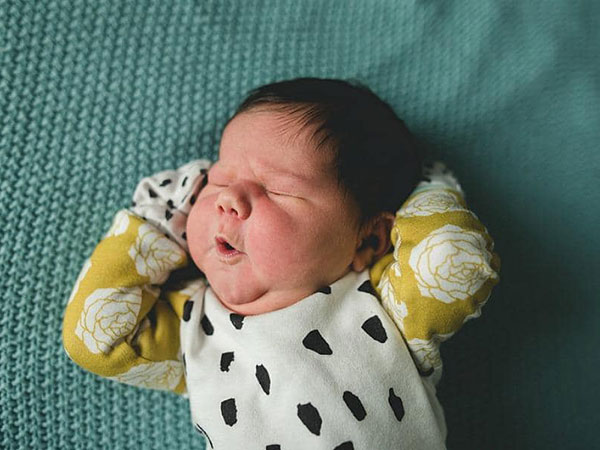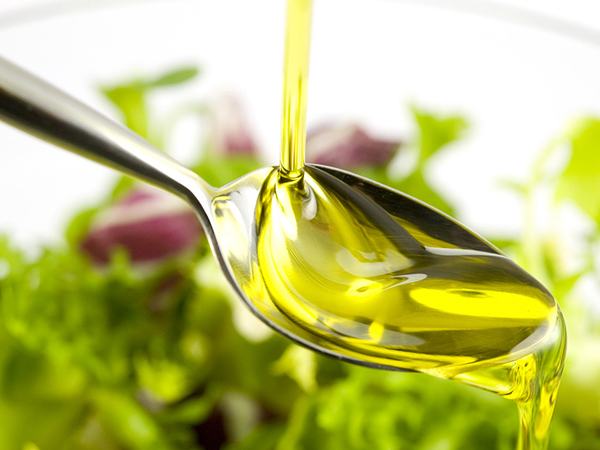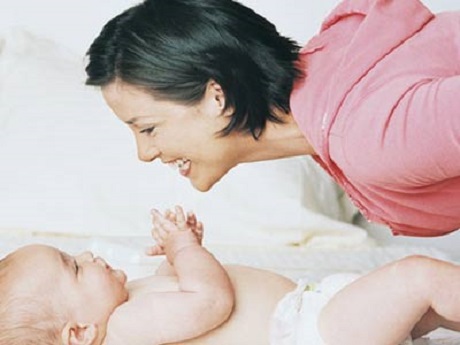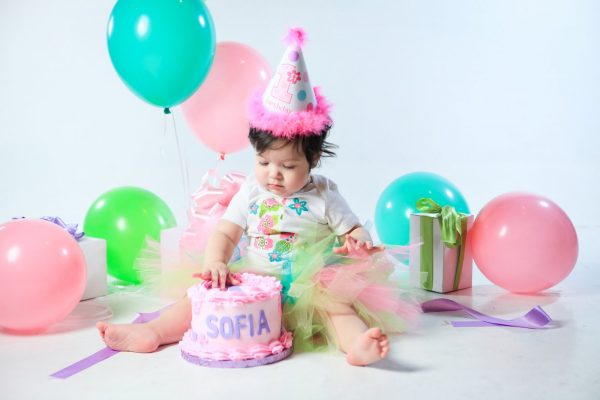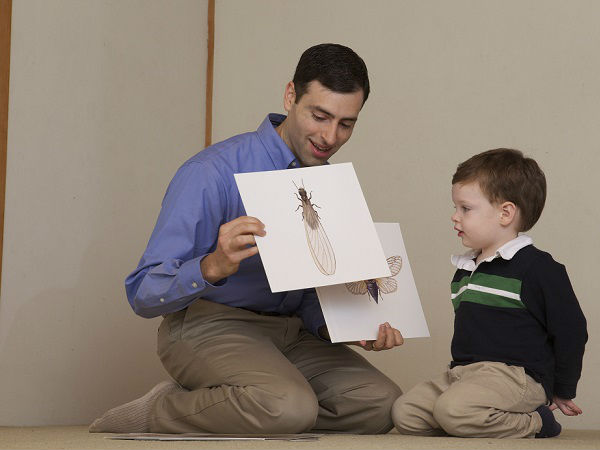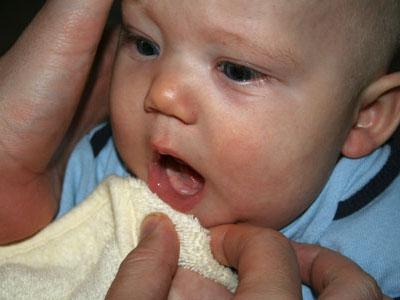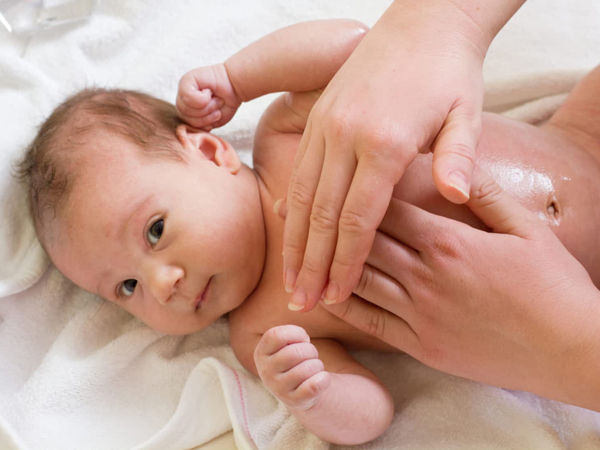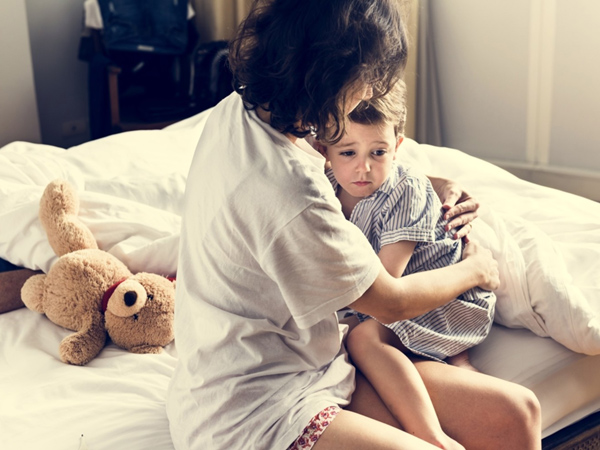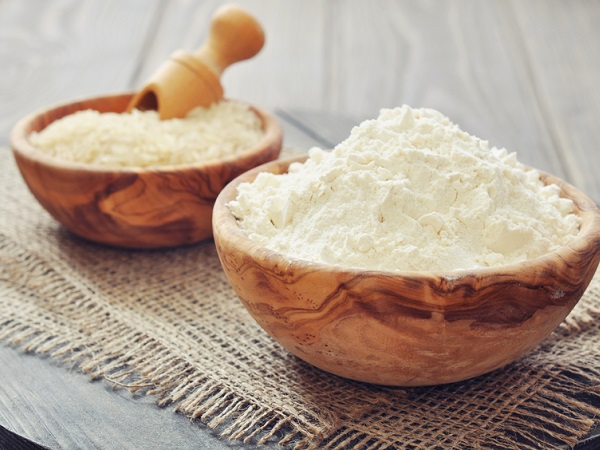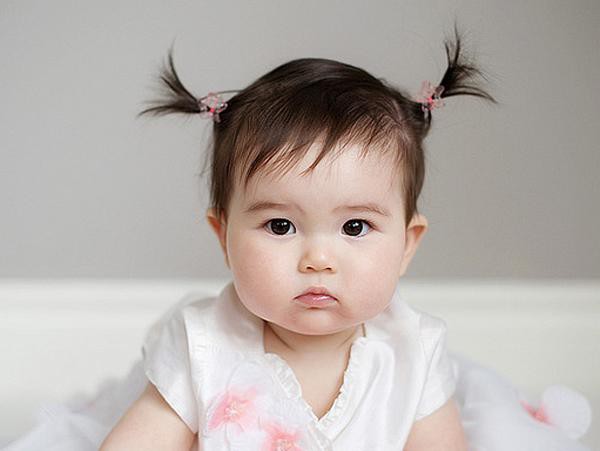Some skin diseases in newborns often make mothers nervous and fidgety. Most of these diseases are quite common and go away on their own without treatment. For more peace of mind, mothers should pocket the following basic information about baby's skin.
1 / Benign skin diseases in infants
Redness: Usually appears on the skin of the face when the baby is 2-3 weeks old and disappears a few weeks later.
Cold, damp, speckled: A common phenomenon in infants, it involves alternating areas of dilated and scaly blood vessels, giving skin colors like red and white marble. Usually appears only when the baby is cold.
Red rash: The rash with a yellow or white center, red around, often appears on many different parts of the baby's body. Usually, at birth or within the first 2-3 weeks, a baby's skin will develop a red rash. They heal themselves within hours, or 8-10 days after that.
Whiteheads: For babies born near the due date or later, whiteheads often appear on the nose. Rest assured, this type of acne will automatically disappear after a few weeks.
Less pigmentation (Mongolian less): This is a bluish-gray area that usually appears near the baby's buttocks, usually at birth or during the first weeks. This birthmark may fade by the time your baby is 2 years old and disappear by the time your baby is 5 years old.
-Vernix: White residue covering and protecting the baby's skin in the womb can still remain on the baby's skin after the baby is born. It is harmless and can be wiped clean. Mom just let it flake off naturally and don't act, as this can cause the baby's skin to bleed.
2 / Take care of the baby's navel
After the baby is taken home, about 1-3 weeks later, the umbilical cord will fall out. Until then, the mother should keep the baby's navel clean and dry. In addition to the antiseptic solution, mothers can use warm water to clean the baby's navel area. Contact your doctor immediately if your baby has a fever (38 degrees C or higher). In addition, the mother should not be subjective when the baby's umbilical region has the following symptoms:
- Swollen and red.
Yellow pus discharge.
-Wash and smells bad.
-Bleed.

Common skin diseases in babies Some skin diseases in babies often cause mothers to worry, not sitting still. Most of these diseases are quite common and go away on their own without treatment. For more peace of mind, mothers should pocket the following basic information about baby's skin.
3 / Bathing your baby properly
You do not need to bathe your baby every day, instead just wipe the baby briefly with a towel soaked with warm water. The face, hands and genitals are the place where mothers should regularly clean the baby. It is not necessary to use soap or shower gel, as it is very irritating to baby's skin.
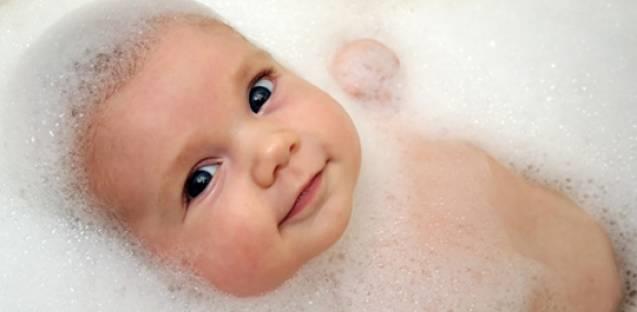
Mom should choose a shower gel that is friendly to baby's skin
Bathe your baby in a warm room, so he feels really comfortable to touch. Fully equipped with bathing utensils around, so that you do not have to run around every time your baby takes a bath, posing a lot of risks. In addition, mothers should notice:
-Do not wear bracelet when bathing your baby, as it can scratch your baby's skin.
- Hold the baby when bathing properly, always keep the baby's head and neck with one hand.
- Use a soft damp cloth to wipe the baby's face, eyes, ears, mouth and face first.
Wipe your baby's genitals from front to back gently.
-With boys, do not pull the foreskin, wash very gently.
-Do not use cotton swabs to clean the baby's ears or nose, just clean the outer skin.
Wipe the baby with a soft dry towel.
4 / Diaper rash in babies
When the diaper is wet or dirty for too long, the skin around the baby's genitals and buttocks often develops a red rash. More seriously, diaper rash will gradually lead to candida mem, skin infections. The best way to prevent diaper rash is that mothers should change diapers often, especially when babies have diarrhea.

Diaper rash, stay away! Diaper rash is a common skin inflammation in young children, however, many mothers still do not really care about this “molester: hateful. If your baby's skin in the diaper contact area is reddish, or worse, is cracked, crusted and may lead to pus fills, consider diaper rash. Do not let...
When changing diapers, mothers should wash the baby's buttocks with soap and warm water. Mom can soak baby buttocks for a while in a basin of warm water for about 30-60 seconds. Apply ointment to the affected area. If more cream is needed, use another finger instead of the old one. Regularly let your baby's skin ventilate, instead of sealing diapers all day.
5 / Seborrheic dermatitis
Seborrheic dermatitis is a common skin disorder that primarily affects the scalp, causing scabs, itching, redness and dandruff. For babies, seborrheic dermatitis of the scalp is known as cradle cap. Seborrheic dermatitis can also affect the face, chest, back, and other oily areas of the body.

Seborrheic dermatitis affects only aesthetic factors
Seborrheic dermatitis isn't harmful, but it can be bothersome and unsightly. It is possible to treat seborrheic dermatitis by recognizing its signs and symptoms and by using a combination of self-care steps and over-the-counter medications.
To treat the skin inflammation on the baby's head, mothers should wash their hair with benign shampoo. After drying, use a brush gently. Do not wash your hair too much as it can dry out your baby's scalp. Use baby oil on the scalp to soften the flakes. Regarding ointments, mothers should consult a pediatrician. The disease will improve when the baby is 4 months old.
6 / Eczema in a newborn
An eczema rash usually appears on a baby's forehead, cheeks or scalp with patches of dry, thick, peeled skin or small, red bumps. It can spread to other parts of the baby's body.
When you find that your baby has signs of eczema infection, you should take warm baths every day for your baby. After bathing, apply a gentle, moisturizing, fragrance-free lotion to your baby's skin. Choose clothes with soft, cool materials.
7 / Contact dermatitis
When babies come into contact with strange things, their skin is easily irritated and rashes. Treatment for the disease is similar to eczema, but first of all, you should find out the cause of your baby's skin irritation to limit and prevent.
8 / Heat rash, rash
When it is hot in the sun, newborn baby's skin often appears a rash. In infants, the rash is mainly found on the neck, shoulders, and chest, but it can also occur in the armpits, elbows and groin wrinkles.
Heat rash usually heals and goes away on its own, and does not require medical attention. You should take your baby to the doctor if symptoms persist for more than a few days, the rash seems to get worse, or signs of infection such as:
Increased pain, swelling, redness, or warmth around the affected area.
Pus flows from the lesions.
Swollen lymph nodes in the neck, armpits, or groin.
Fever or chills.
>>> Discussions on the same topic:
The secret to treating rubella
Children have a rash or measles?
Babies with tiny acne when 3 weeks old
